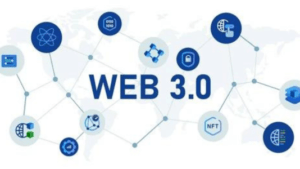Introduction
- Definition of DApps
- Key features of DApps
- Evolution from Web 2.0 to Web 3.0
Underlying Technologies
- Blockchain technology
- Smart contracts
- Consensus mechanisms
- Interoperability protocols
Finance Sector
- Decentralized finance (DeFi) platforms
- Examples: Uniswap, Compound, Aave
- Benefits of DeFi: Enhanced accessibility, transparency, and security
Gaming and Non-Fungible Tokens (NFTs)
- Play-to-earn models
- Examples: Axie Infinity, CryptoKitties, Decentraland
- NFTs and their role in gaming
- Tokenized economies and digital ownership
Social Media and Content Platforms
- Censorship-resistant social networks
- Examples: Steemit, Mastodon
- Decentralized content storage and distribution
- Tokenized incentivization models
Supply Chain and Traceability
- Immutable product provenance
- Examples: VeChain, OriginTrail
- Transparency and trust in supply chains
Governance and Voting
- Decentralized decision-making processes
- Examples: Aragon, DAOstack
- Eliminating intermediaries and enhancing participation
Identity and Privacy
- Self-sovereign identity (SSI)
- Examples: uPort, Sovrin
- Privacy-preserving DApps
- Data ownership and control
Challenges and Limitations
- Scalability and transaction throughput
- User experience and adoption hurdles
- Regulatory and legal considerations
Future Prospects
- Layer 2 solutions for scalability
- Enhanced user experiences and UI/UX
- Integration with emerging technologies (AI, IoT)
- Regulatory frameworks and mainstream adoption
Conclusion
- Recap of the potential of DApps
- Web 3.0’s killer app: Empowering users and reshaping industries
- The future landscape of DApps
Introduction
In the rapidly evolving landscape of the internet, Web 3.0 is emerging as a paradigm shift that promises to reshape the way we interact and transact online. At the heart of this transformation are decentralized applications, or DApps, which have the potential to become Web 3.0’s “killer app.” DApps leverage the power of blockchain technology and smart contracts to create decentralized, transparent, and secure platforms that offer numerous advantages over traditional centralized applications.
- 1.1 Definition of DApps
Decentralized applications, or DApps, are software applications that run on decentralized networks, such as blockchain, rather than on centralized servers. These applications aim to eliminate the need for intermediaries, increase transparency, enhance security, and empower users by giving them greater control over their data and digital interactions.
- 1.2 Key Features of DApps
DApps possess several key features that set them apart from traditional applications:
Decentralization: DApps operate on decentralized networks, removing the need for centralized authorities.
Transparency: All transactions and interactions within DApps are recorded on the blockchain, providing transparent and auditable operations.
Security: The decentralized nature of DApps enhances security by eliminating single points of failure and reducing the risk of hacking or data breaches.
User Empowerment: DApps prioritize user control and ownership of data, providing users with greater autonomy and privacy.
Interoperability: DApps can interact and exchange value with other DApps and blockchain networks, enabling seamless integration across different platforms.
- 1.3 Evolution from Web 2.0 to Web 3.0
Web 2.0 brought about a wave of interactive and user-generated content platforms, social media networks, and e-commerce platforms. However, these platforms are predominantly centralized, with data and control resting in the hands of a few powerful entities. Web 3.0 seeks to overcome these limitations by introducing decentralized technologies and empowering users with greater autonomy and control. DApps are at the forefront of this transformation, offering a new wave of applications that can disrupt industries across the board.
Underlying Technologies
- 2.1 Blockchain Technology
Blockchain technology forms the foundation of DApps, providing a decentralized and tamper-resistant ledger. It ensures the immutability of data, enables transparent and auditable transactions, and establishes trust among participants.
- 2.2 Smart Contracts
Smart contracts are self-executing agreements coded on the blockchain. They automate the execution of predefined conditions without the need for intermediaries. Smart contracts enable trustless transactions and facilitate the seamless operation of DApps.
- 2.3 Consensus Mechanisms
Consensus mechanisms, such as Proof of Work (PoW) and Proof of Stake (PoS), validate transactions and secure the blockchain network. They ensure agreement among participants and prevent malicious activities.
- 2.4 Interoperability Protocols
Interoperability protocols allow different blockchains and DApps to communicate and exchange value seamlessly. These protocols facilitate cross-chain transactions and enable the integration of various DApps into a unified ecosystem.
Finance Sector
The finance sector has been one of the earliest adopters of DApps, with decentralized finance (DeFi) platforms leading the way.
- 3.1 Decentralized Finance (DeFi) Platforms
DeFi platforms enable financial services, such as lending, borrowing, trading, and yield farming, without the need for traditional intermediaries. They leverage smart contracts to automate processes and provide users with greater accessibility, transparency, and control over their financial activities.
- 3.2 Examples: Uniswap, Compound, Aave
Uniswap is a decentralized exchange (DEX) that allows users to trade tokens directly from their wallets. Compound is a lending platform that enables users to lend and borrow digital assets. Aave is a decentralized lending and borrowing protocol that incorporates unique features like flash loans.
- 3.3 Benefits of DeFi: Enhanced Accessibility, Transparency, and Security
DeFi platforms offer greater accessibility by removing barriers to entry and allowing anyone with an internet connection to participate. They provide transparency by allowing users to track transactions on the blockchain. Additionally, DeFi platforms enhance security by eliminating the need to trust centralized intermediaries.
Gaming and Non-Fungible Tokens (NFTs)
DApps have disrupted the gaming industry by introducing play-to-earn models and leveraging non-fungible tokens (NFTs) to tokenize in-game assets.
- 4.1 Play-to-Earn Models
Play-to-earn models enable gamers to earn cryptocurrencies or tokens by participating in gameplay activities. This allows players to monetize their skills and time invested in games.
- 4.2 Examples: Axie Infinity, CryptoKitties, Decentraland
Axie Infinity is a blockchain-based game where players can earn income by breeding, battling, and trading digital creatures called Axies. CryptoKitties is a game that allows users to breed and trade unique digital cats. Decentraland is a virtual reality platform where users can buy, sell, and monetize virtual land and assets.
- 4.3 NFTs and their Role in Gaming
NFTs are unique digital assets that can represent ownership of in-game items, virtual land, artwork, and more. They enable players to have true ownership and control over their virtual assets, fostering a thriving ecosystem of digital collectibles and decentralized economies.
- 4.4 Tokenized Economies and Digital Ownership
DApps in the gaming sector create tokenized economies where in-game assets can be bought, sold, and traded on decentralized marketplaces. This allows players to have verifiable ownership of digital items and facilitates the emergence of a new economy built around gaming and virtual worlds.
Social Media and Content Platforms
DApps are disrupting traditional social media platforms by offering censorship-resistant networks and tokenized incentivization models.
- 5.1 Censorship-Resistant Social Networks
DApps provide social networks that are resistant to censorship, where users have control over their content, and platforms cannot arbitrarily remove or manipulate data.
- 5.2 Examples: Steemit, Mastodon
Steemit is a decentralized social media platform that rewards users with cryptocurrency for creating and curating content. Mastodon is an open-source, federated social network that allows users to create their own instances and have control over their data.
- 5.3 Decentralized Content Storage and Distribution
DApps leverage blockchain technology to create decentralized content storage and distribution systems, where content is stored across a network of participants, ensuring redundancy and resilience.
- 5.4 Tokenized Incentivization Models
DApps introduce token-based incentivization models, where users are rewarded with tokens for their contributions to the platform. This aligns the interests of users and platform operators and fosters a community-driven ecosystem.
Supply Chain and Traceability
DApps are transforming supply chain management by providing immutable product provenance, enhanced transparency, and trust among participants.
- 6.1 Immutable Product Provenance
DApps enable the tracking and recording of every stage of a product’s journey on the blockchain, ensuring the authenticity and traceability of goods.
- 6.2 Examples: VeChain, OriginTrail
VeChain utilizes blockchain technology to provide end-to-end traceability and transparency for supply chains, ensuring the integrity and authenticity of products. OriginTrail is a decentralized protocol that enables companies to share supply chain data securely and transparently.
- 6.3 Transparency and Trust in Supply Chains
By leveraging DApps, supply chain participants can verify the authenticity, quality, and ethical standards of products, ensuring greater transparency and trust among consumers.
Governance and Voting
DApps empower users with decentralized decision-making processes, eliminating intermediaries and enhancing participation.
- 7.1 Decentralized Decision-Making Processes
DApps enable community governance, where decisions are made through consensus mechanisms and voting among token holders, giving users a direct say in the development and direction of the platform.
- 7.2 Examples: Aragon, DAOstack
Aragon is a platform that allows users to create and manage decentralized autonomous organizations (DAOs), enabling decentralized governance. DAOstack provides a framework for the creation of decentralized organizations and decision-making protocols.
- 7.3 Eliminating Intermediaries and Enhancing Participation
DApps remove the need for centralized authorities and intermediaries, allowing users to directly participate in decision-making processes, thereby promoting transparency and inclusivity.
Identity and Privacy
DApps offer self-sovereign identity (SSI) solutions, preserving privacy and giving users control over their personal information.
- 8.1 Self-Sovereign Identity (SSI
SSI refers to the concept of individuals having full control over their digital identities and the ability to selectively disclose personal information without relying on centralized entities.
- 8.2 Examples: uPort, Sovrin
uPort is a blockchain-based identity management system that enables users to have full control over their digital identities and selectively share information. Sovrin is a global public utility for self-sovereign identity, providing a decentralized and interoperable identity ecosystem.
- 8.3 Privacy-Preserving DApps
DApps leverage encryption and decentralized storage to protect user privacy, ensuring that personal data is not controlled or exploited by centralized authorities.
- 8.4 Data Ownership and Control
DApps empower users with ownership and control over their data, allowing them to choose how and with whom they share their information.
Challenges and Limitations
While DApps hold immense potential, they also face several challenges and limitations that need to be addressed for broader adoption:
- 9.1 Scalability and Transaction Throughput
Current blockchain infrastructure faces limitations in terms of scalability and transaction throughput, which can impact the user experience and hinder widespread adoption of DApps. However, various Layer 2 solutions, such as sidechains and state channels, are being developed to address these challenges.
- 9.2 User Experience and Adoption Hurdles
The user experience of DApps can be complex and unfamiliar to non-technical users. Improvements in user interfaces and educational resources are necessary to make DApps more user-friendly and accessible to a broader audience.
- 9.3 Regulatory and Legal Considerations
The regulatory landscape surrounding DApps is still evolving, and there are challenges related to compliance, jurisdiction, and legal frameworks. Clear regulations and guidelines are necessary to foster innovation and ensure consumer protection.
Future Prospects
The future of DApps holds several exciting possibilities and developments:
- 10.1 Layer 2 Solutions for Scalability
Layer 2 solutions, such as Ethereum’s Optimism and Arbitrum, are being developed to address scalability challenges and improve transaction throughput, making DApps more efficient and scalable.
- 10.2 Enhanced User Experiences and UI/UX
Improvements in user interfaces and user experiences are crucial for broader adoption of DApps. Streamlined and intuitive interfaces will make DApps more accessible to a wider range of users.
- 10.3 Integration with Emerging Technologies (AI, IoT)
Integration with emerging technologies, such as artificial intelligence (AI) and the Internet of Things (IoT), can enhance the functionality and capabilities of DApps, enabling new use cases and expanding their potential impact.
- 10.4 Regulatory Frameworks and Mainstream Adoption
Clear and well-defined regulatory frameworks will provide the necessary confidence and legal certainty for businesses and individuals to embrace DApps. Mainstream adoption of DApps will unlock their full potential and drive innovation across various industries.
Conclusion
Decentralized applications (DApps) are at the forefront of the Web 3.0 revolution, offering a new paradigm of decentralized, transparent, and secure applications. Across finance, gaming, social media, supply chain, and more, DApps are revolutionizing industries, empowering users, and reshaping the digital landscape. While challenges exist, the future prospects of DApps are promising, with improvements in scalability, user experience, and regulatory frameworks paving the way for their widespread adoption. As Web 3.0’s potential “killer app,” DApps hold the power to transform the internet and empower individuals in ways previously unimaginable.



